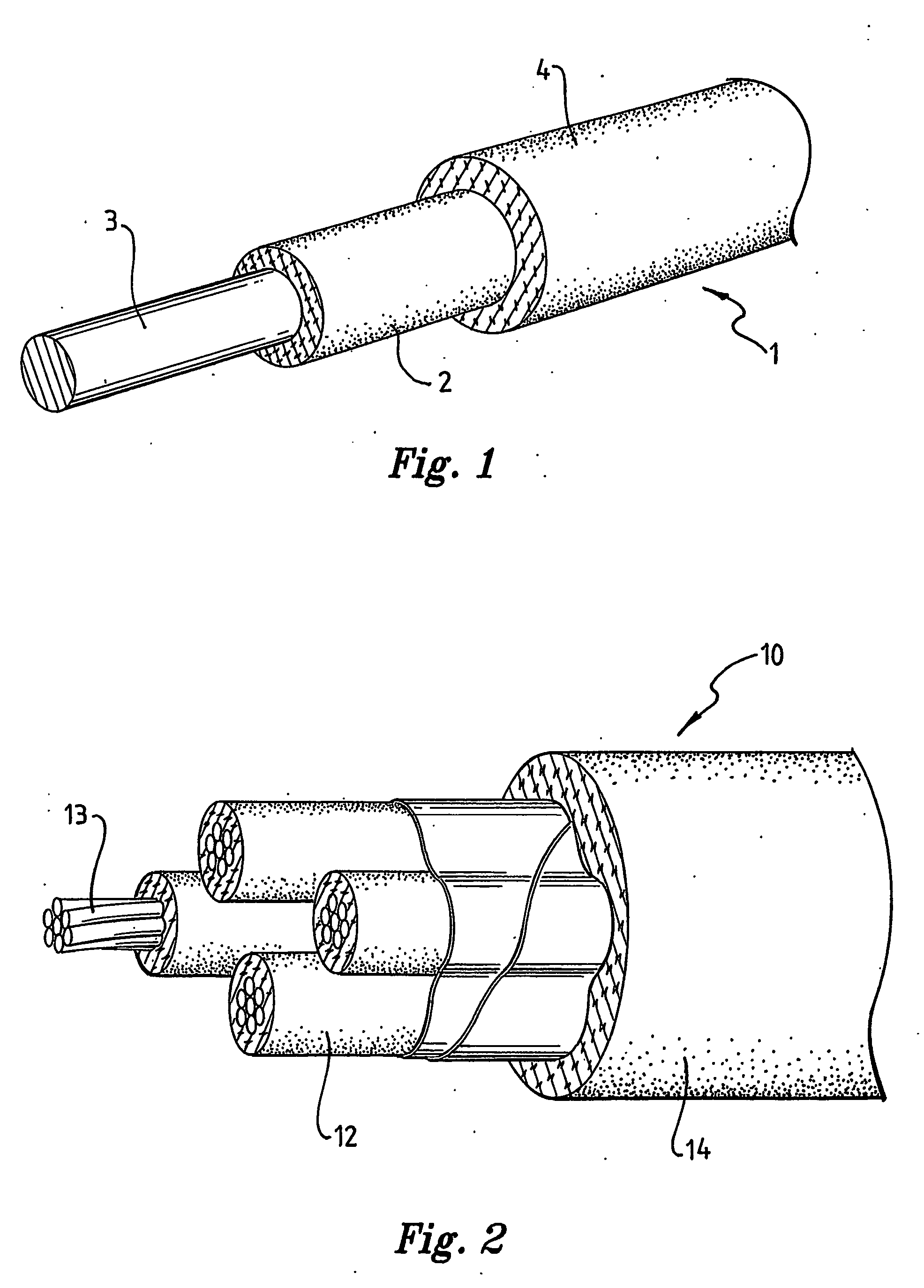Fire resistant polymeric compositions
a polymer composition and fire-resistant technology, applied in the field of polymer compositions, can solve the problems of affecting the performance of the product, and the integrity of the product is likely to be compromised, so as to reduce the density, reduce the thermal conductivity, and improve the water resistance
- Summary
- Abstract
- Description
- Claims
- Application Information
AI Technical Summary
Benefits of technology
Problems solved by technology
Method used
Image
Examples
example 1
[0119] A number of compositions (see Table 1) were prepared and are denoted A-T. After firing, each sample took the form of a ceramic char. The change in linear dimension resulting from firing and the flexural strength of the ceramic char formed were determined as described above after cooling the samples to room temperature. All of the samples shown in Table 1 are suitable for use as an insulation layer and / or sheathing layer on a cable.
[0120] Composition A is an example of a basic composition that consists of only one organic polymer, silicate mineral fillers, a small amount of a fluxing oxide and some additives.
[0121] Sample B is a composition comprising a blend of an organic polymer with a small amount of a silicone polymer which is a source of silica for char formation. This composition does not contain any separately added fluxing oxides (all the fluxes are derived from mineral fillers).
[0122] Sample C has a composition that contains a small amount of glass frit as a source...
example 2
[0133] Electric cables were made using compositions B and T from the table above. Those made with composition T exhibited a high char shrinkage that resulted in cracking of the insulation layer at 1050° C., leading to insulation failure in the fire test (heating stage) according to AS / NZS 3013:1995. Cables made with the composition B that has a low char shrinkage passed the same test. The char produced was free of large visible cracks in the case of composition B whereas the char formed from composition T was heavily cracked leaving the conductor exposed.
example 3
[0134] A composition (X) having the constituents listed in Table 2 below was prepared. Composition X was based on a commercially available ethylene propylene elastomer and silicone elastomer. The mica used was muscovite with a mean particle size of 160 μm determined by sieve analysis. Glass frit A has a softening point of 430° C. and a fluxing oxide content of 30.8%. Glass frit B has a softening point of 600° C. and a fluxing oxide content of 5.1%. Glass fibers A, B and C have softening points of 580° C., 650° C. and 532° C., respectively and fluxing oxide contents of 12-15%. Di(t-butylperoxyisopropyl) benzene peroxide was included in the compositions for effecting thermal crosslinking. All compositions listed in this example are given in % wt / wt.
TABLE 2Components(% wt / wt)Ethylene propylene rubber27Silicone polymer8Muscovite mica20Glass frit B2Clay28Talc10Zinc oxide2Peroxide2Antioxidants, coagents1Total100Total Flux (%)2.8Fluxing oxide as a percent of residue4.6
PUM
| Property | Measurement | Unit |
|---|---|---|
| Temperature | aaaaa | aaaaa |
| Temperature | aaaaa | aaaaa |
| Fraction | aaaaa | aaaaa |
Abstract
Description
Claims
Application Information
 Login to View More
Login to View More - R&D
- Intellectual Property
- Life Sciences
- Materials
- Tech Scout
- Unparalleled Data Quality
- Higher Quality Content
- 60% Fewer Hallucinations
Browse by: Latest US Patents, China's latest patents, Technical Efficacy Thesaurus, Application Domain, Technology Topic, Popular Technical Reports.
© 2025 PatSnap. All rights reserved.Legal|Privacy policy|Modern Slavery Act Transparency Statement|Sitemap|About US| Contact US: help@patsnap.com



